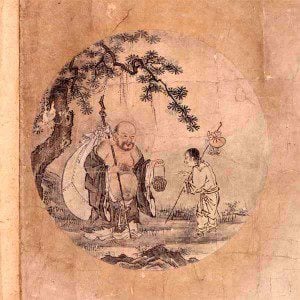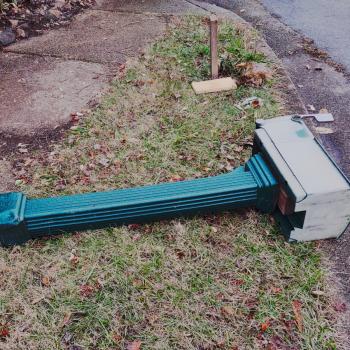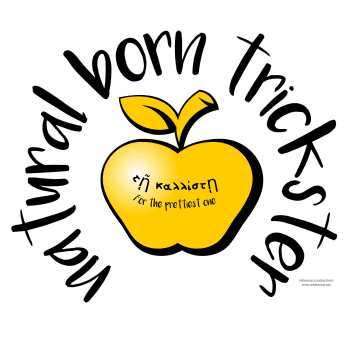The life that we live seems normal to us. It’s the magic (or perhaps the anti-magic) of habituation. The human brain can adapt to just about anything, and I suppose that’s an important survival strategy. It woud be hard to keep ourselves fed if every time we opened our eyes we were overcome with wonder.
But because of that we are often more attuned to the wonders that others create than the wonders we perform ourselves. I listen to my doctor talk about her trip to Haiti to do relief work in the wake of the earthquake, or I look at my father’s decades of work helping the neighborhood with youth sports and community involvement, or my mother’s lifetime of working with special needs children,* and I think, what have I done with my life that’s worthwhile?
([*] Yes, I’ve often joked that my brother and I were part of this work…)
I forget that I’ve been teaching karate for over two decades, and that has probably helped some of my students as much as it helped me. I forget about the octogenarian client who comes to me for shiatsu every few weeks and says it helps keep her living independently in her own home. I forget that I’ve got a life or two in the “saved” column. I forget about my work with the FSG Bardic Circle and the poetry workshop Zelda’s Inferno, which have helped people find their voice.
We forget that the things we do are special, because they are ordinary to us.
 In our common cultural mythology, around this time every year we think about a chubby guy going around handing out gifts from a big sack. As it happens Buddhism has a chubby guy with a sack too — Hotei, the fellow often mistaken in the West for a fat Buddha, whose very name means “Cloth Sack”. According to legend his bag was full of sweets, and he would wander around giving them out to children.
In our common cultural mythology, around this time every year we think about a chubby guy going around handing out gifts from a big sack. As it happens Buddhism has a chubby guy with a sack too — Hotei, the fellow often mistaken in the West for a fat Buddha, whose very name means “Cloth Sack”. According to legend his bag was full of sweets, and he would wander around giving them out to children.
Hotei appears in one of my favorite Zen koans. Asked, “What is the significance of Zen?” (or in some versions, “What is enlightenment?”) he puts down his bag, laying down his burden. Asked “What is the actualization of Zen” (or “What is the way to enlightenment?” or “And what comes after enlightenment?”), he picks up his sack and goes on his way.[Reps, 16]
Wandering the streets with his bag of gifts, Hotei might have given out a dozen presents a day, every day. It was his ordinary mind, his everyday Zen. But to each child, each gift was a special delight.
One of the common traps that spiritual seekers can fall into is a sort of “attachment to emptiness”, of believing that special states of consciousness or mystical experiences are someone more real or valid or important than what is here and now.
And I don’t mean the cliche “here and now”, I mean HERE! NOW! Where I am as I write this, the sound of a jet overhead, the dog at my feet, the clack of the computer keyboard, the slight rattle of the stuff on the table as I type, the slight ache in my back, all of it, or whatever it is where and when you read this.
When we’re sitting back absorbed in our experience of “emptiness” or “satori” or “enlightenment” or “Cosmic Consciousness” or whatever, we’re being absorbed in our experience. Worse, we’re absorbed in our evaluation of our experiences. We’re shutting out all those other sentient beings, creating a nice little one-person mutual admiration society. (Yes, that’s not logically literally possible. Consider it a poem or a paradox.)
Zen is watchful for this. We might even say it even takes a certain glee in smacking it out of people.
Geri Larkin points out the importance of the fact that Hotei (or someone looking a heck of a lot like him) shows up at the end of the famous Oxherding Pictures:
If we stick to the practice, though, we eventually end up with a pretty calm mind. This is where, in the Oxherding Pictures, the ox disappears into oneness, and the famous Zen enso circle image appears. One would think that this is the end of our path. We get to oneness, and its all good. We get to oneness and we’re done.
Nope.
Instead, the pictures finish with an image of this old vagabond of a grinning potbellied fellow, wearing rags and barefooted, who is walking casually through a village with a huge bag of goodies on his back, handing out candies to the villagers. A surprise ending! We aren’t finished when we finally sink into emptiness or whatever phrase we want to use to describe one mind. Our job is to head back into the marketplace with a bag of goodies at the ready.[Larkin]
In some versions this final picture has the title “Entering the City with Bliss-bestowing Hands.”[Suzuki 134]
It’s easy to look around and see how others might have those hands, see the gifts that others give. It’s harder to see what’s in the big gift bag that each of us carries on our back. But that’s the task. As Larkin puts it, “My job is simply to ask myself, “What is the piece of candy this situation calls for?” Then I can match the need with my capacity to respond with what is in MY bag of goodies.”[Larkin]
So this Yule, I ask you: what’s in your goodie bag? How will you help save all sentient beings from suffering with the gifts you have to give?
Larkin, Geri. “Out of the Blue.” Lion’s Roar. 6 Nov 2014. http://www.lionsroar.com/blue/
Reps, Paul ed. Zen Flesh, Zen Bones. New York: Anchor Books (Doubleday). [Date of edition unknown – c. 1960].
Suzuki, D.T. Manual of Zen Buddhism. New York: Grove Weidenfield, 1960.
You can keep up with “The Zen Pagan” by subscribing via RSS or e-mail.
Have I mentioned my book lately? Why Buddha Touched the Earth makes a great Yule gift for the Zen Pagan on your list.
If you do Facebook, you might choose to join a group on “Zen Paganism” I’ve set up there. And don’t forget to “like” Patheos Pagan and/or The Zen Pagan over there,
too.













